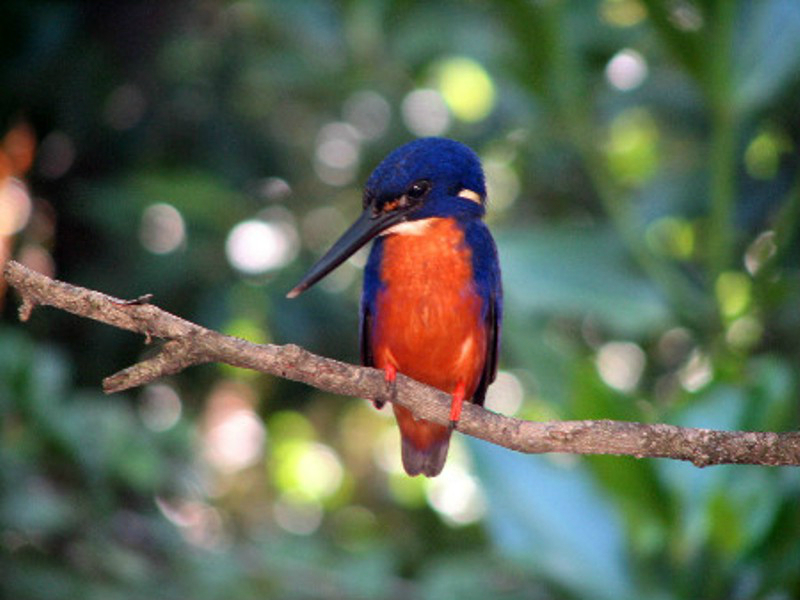Cape Tribulation Daintree National Park
In Far North Queensland, just north of Port Douglas, the Daintree Rainforest is a dense jungle area part of the Australian Wet Tropics environment protected by World Heritage Listing, United Nations. The Daintree Rainforest is amongst the most ancient ecosystems on earth. More than 18,000 known plant species exist. Some trees are more than 2,500 years old.
Towering fan palms stretch towards the sunlight filtering through the rainforest canopy, while the brilliance of the coloured flowers liven up the surrounds. Hiding in this lush paradise is some of the worlds most unique and spectacular wildlife. Catch a glimpse of the colourful parrots as they fly through the canopy or the timid and friendly lizards that scurry across the rainforest floor.
Some species of plants have survived here since the days of the dinosaurs. The mossy trunks of the ancient trees hold a canopy of dense green aloft. Dappled sunlight filters through to the ferns, cycads and vines. Birds, animals and reptiles continue to live as they had for eons. No wonder some of the worlds leading movie directors chose this as a shooting location.
Accessing the Daintree Rainforest
It is possible to access some National Park rainforest areas by car, where you can hike through marked paths through the jungle but much of the Daintree is inaccessible wilderness. Only experienced hikers penetrate its heart. However, it is highly recommended that you take a tour through the more dense rainforest areas where this living museum will come to life with the expert guides explanation.
The sheer number of individual trees can bewilder - with counts of over 1000 per hectare, excluding saplings under 10cm diametre. Over 800 different species of trees have been identified here, with a substantial number only found in this area. The canopy of the rainforest makes for great competition amongst its flora residents for sunlight. Clever trees and plants out-trick each other to be at the top.
The tropical rainforest is unquestionably the most significant plant community on earth. It represents the evolutionary quintessence of a 450 million year journey commencing with the emergence of the first primitive plant on land - the algae - to the present day. At least 90 species of the exquisite orchid family are found in Queenslands wet tropics, nearly half of these cannot be found anywhere else.
The Daintree is famous for its beautiful fan palms. Unquestionably, the most handsome of all palms, its huge, near-circular pleated fronds intensify the tropic jungle feel. However, the area supports a further fifteen varieties of palms, all endemic to Australia. They include black palm, oriana, and the wait-a-while climbing palm.

The jungle is alive with creatures. Look out for parrots, orange footed scrubfowl, and the famous cassowary. The cassowary is a bird, similar in size to the emu, but in black with a brightly coloured head. Standing up to 2 metres, 4.4 yards tall, the cassowary is vital to the ecosystem of the rainforest here. Like flying foxes, it is considered a keystone species. It eats mostly fruits collected from the rainforest floor, and is the most important dispenser of larger rainforest seed. The sex-roles of the cassowary are reversed. After laying the eggs, the female abandons her mate. The male incubates and cares for the brood of young until they are up to 15 months of age.
Reptiles include fresh water and estuarine crocodiles, lizards, bright coloured tree snakes and tortoises. Its hard to miss the electric coloured butterflies, green tree ants, and bright green tree frogs. Complex in character, this ecosystem is a self-sustaining community living affluently due to a combination of several important elements such as warmth, rainfall, nutrients and sunlight. It supports an endless array of life forms whose lives and routines elaborately intertwine.



































